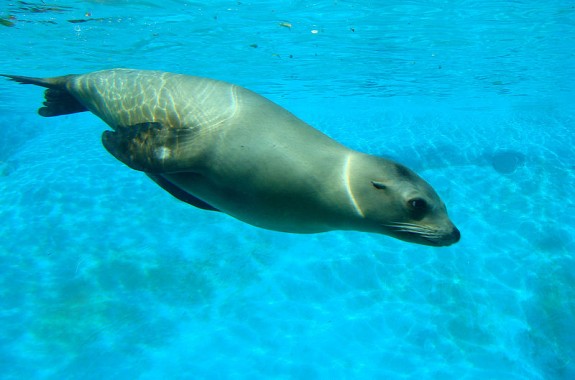Sea Lions Deliberately Collapse Their Lungs So They Can Dive Deeper
Shutting down their lungs helps sea lions avoid getting the bends

California sea lion. Photo: Vassil
All animals who spend time traversing the oceans’ depths need a way to combat the risks posed by rapidly shifting pressure levels. When you dive deep down, the increasing pressure pushes the gases in your lungs into your cells. Go down deep enough then kick back up, and those gases can turn to bubbles. These bubbles can cause the bends, or decompression sickness, which can be quite painful and even fatal. For humans to avoid the disorder, divers need to slowly ascend to the surface, giving their bodies time to adjust to the changing pressure—a slow and cumbersome process. Non-human divers, though, likely have neither the time nor the safety to linger about. In a new study lead by Birgitte McDonald, researchers found that California sea lions have a much more elegant method of avoiding decompression sickness.
Writing in Science, Brian Switek says that the sea lions collapse their lungs once they hit a depth of 225 meters, preventing the flow of air from the lungs to the blood.
This technique not only staved off decompression sickness, by keeping nitrogen out of the bloodstream, but also reduced the amount of oxygen delivered from her lungs to her bloodstream—preserving the oxygen within the sea lion’s upper airways.
Lung collapse in diving mammals is a natural action, in which air-processing alveoli – elastic, balloon-like structures attached to the bronchi – are depleted to reduce the size of the organ.
The researchers found that the sea lions keep a reserve of air in their upper airway, which gives them enough to get back to the surface without drowning.
More from Smithsonian.com:
/https://tf-cmsv2-smithsonianmag-media.s3.amazonaws.com/accounts/headshot/smartnews-colin-schultz-240.jpg)
/https://tf-cmsv2-smithsonianmag-media.s3.amazonaws.com/accounts/headshot/smartnews-colin-schultz-240.jpg)